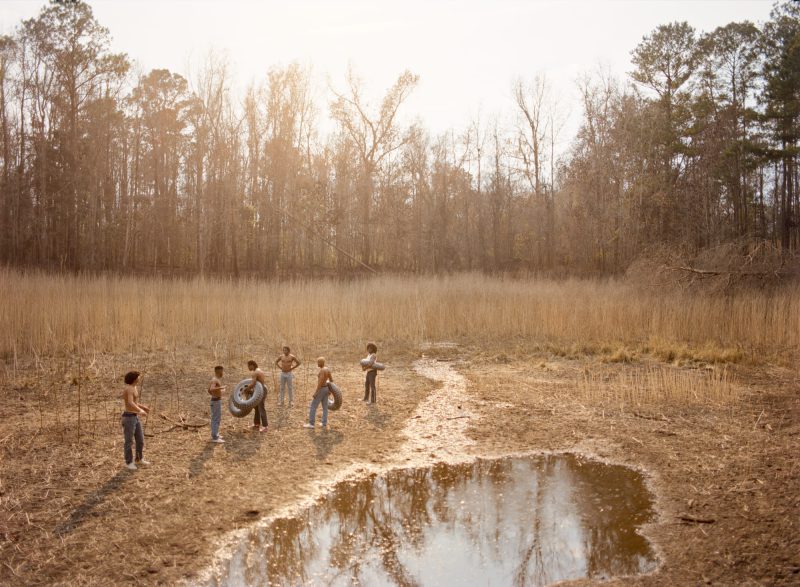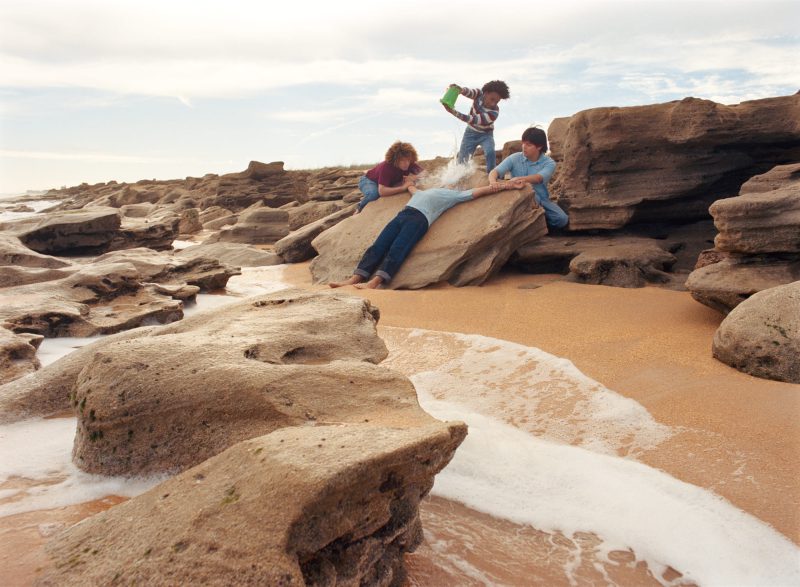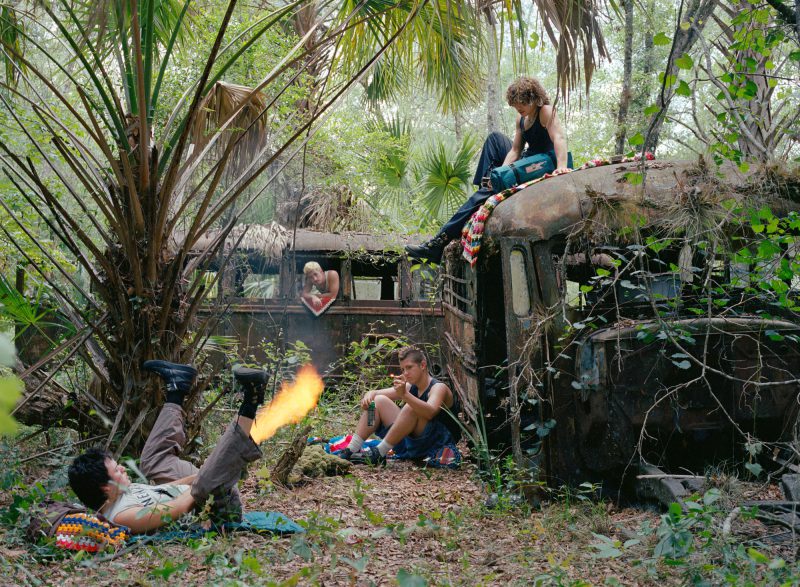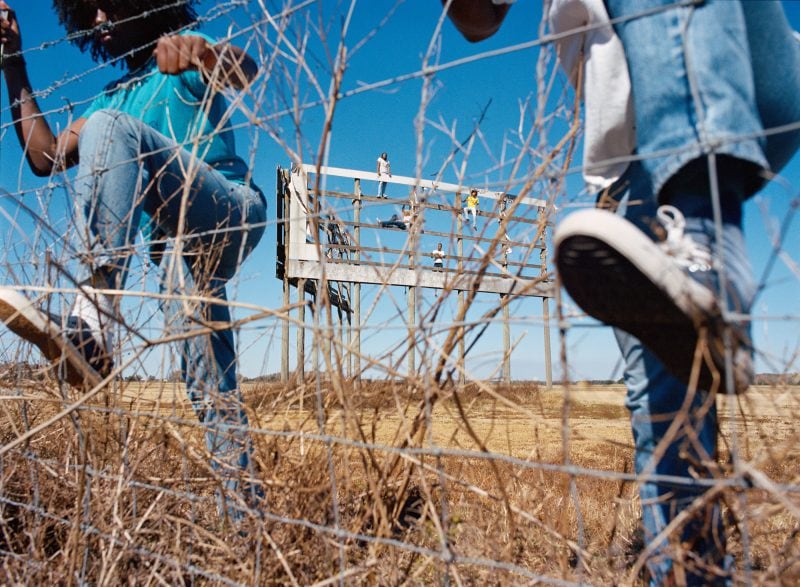There are images that resemble memories, and others that serve as collective dreams. Florida Boys, the series shot by Josh Aronson between 2020 and 2025 along the back roads of the American state, belongs to both categories. In his shots, groups of young people move among water, sand and trees as if in a ritual of passage with no beginning and no end. Sometimes they play, other times they pause in silence, suspended in a balance between intimacy and distance.
The colours are soft, almost faded, as if each photograph had passed through the lens of memory. The southern light, rather than illuminating, seems to blur the settings and subjects. Florida Boys narrates the desire for a world in which masculinity manifests itself as vulnerability and in which strength matches the ability to be touched, embraced, seen.
In the photographs, the boys climb trees suspended over water, cross flooded fields or lie down on submerged logs. There is a constant tension between the wildness of nature and the delicacy of their gestures. The landscape becomes a companion, no longer a backdrop or mere location. The setting becomes an extension of the bodies, a place where physicality is freed from the codes of power typical of masculinity. The poses and composition of the photos come from the language of painting or cinema, but remain spontaneous, almost improvised. It is as if the photographer had created an invisible set, allowing reality and spontaneity to take over.
In this sense, Florida Boys dialogues as much with the tradition of the tableau vivant as with a certain coming-of-age aesthetic. The photographic series consists of fragments that could belong to a Harmony Korine film or even a simple family album, but which in reality construct a narrative of the present. Each image contains a story of friendship, boredom or escape, while at the same time contributing to a broader narrative about the digital age. It is the story of a generation that has grown up between digital isolation and collective crises, searching for authentic contact with the world and with itself.
The artist speaks of ‘moments of connection that feel increasingly rare in a generation raised on screens’. And indeed, what strikes us is not only the beauty of the landscapes or the careful composition, but the closeness and support. In the way the boys support each other, there is a form of strength, a way of being in the world that contradicts the idea of masculinity as domination or isolation.
Ultimately, Florida Boys is not just about boys, but about a way of being together in the world. Intimacy is a language made up of trust and silence, which restores masculinity to its most disarmed and truest dimension. This is what remains after watching Florida Boys, a tenderness that does not ask to be explained, only recognised.










